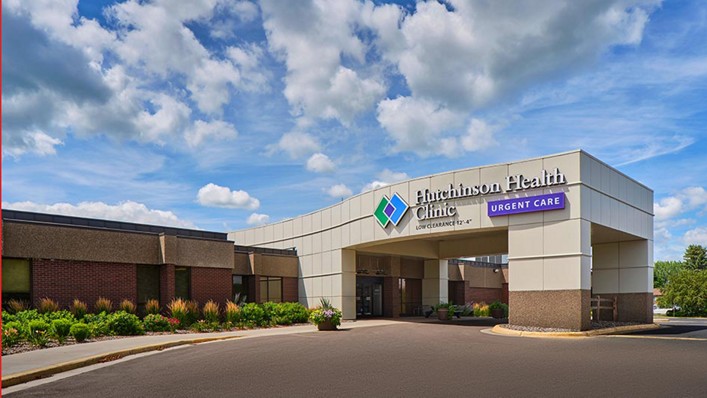Specialist Advice on Navigating Clinic Options for Urgent Care
Wiki Article
Comprehending the Function of Urgent Care in Offering Timely Treatment for Non-Life-Threatening Conditions
Immediate care centers have emerged as a crucial component of the medical care landscape, addressing the prompt requirements of people with non-life-threatening conditions. Recognizing the nuances of urgent treatment could dramatically affect person results and the total effectiveness of medical care shipment.What Is Urgent Treatment?
Urgent care describes a classification of clinical services developed to resolve non-life-threatening conditions that need immediate interest. These centers function as an intermediary between medical care doctors and emergency situation areas, providing a hassle-free alternative for clients who require punctual care without the comprehensive waiting times typically related to emergency situation departments.Urgent care facilities are commonly staffed by physician, including medical professionals, registered nurse practitioners, and physician assistants, that are trained to diagnose and deal with a vast variety of conditions. Typical services supplied by these facilities consist of therapy for small injuries, illnesses, and infections, as well as diagnostic tests such as X-rays and laboratory work.
In addition, immediate care centers often approve walk-in clients, removing the need for consultations. In general, immediate care plays an important duty in the healthcare system, making sure patients can access vital clinical services immediately and efficiently.

Lots of individuals might discover themselves uncertain concerning when to look for care at an immediate care facility instead of a primary treatment doctor or an emergency clinic. Immediate treatment is developed to resolve non-life-threatening conditions that call for timely focus however are not extreme sufficient to necessitate an emergency clinic see.
Typically, one need to take into consideration urgent treatment for issues such as small cracks, sprains, cuts requiring stitches, or infections like urinary tract infections. In addition, cold or influenza symptoms, rashes, and allergies can also be properly taken care of in this setting.
It is essential to keep in mind that immediate treatment is not ideal for deadly emergency situations, such as chest pain, problem breathing, or serious bleeding, which require immediate emergency room treatment.
People who do not have access to a health care doctor or can not secure a prompt visit might likewise take advantage of urgent care services. Eventually, recognizing when to utilize urgent care can result in extra reliable healthcare delivery, allowing clients to get the appropriate degree of care based upon their details wellness needs.
Advantages of Urgent Treatment Centers
Picking immediate treatment facilities for non-life-threatening problems uses numerous benefits that boost person experience and accessibility. One primary benefit is the reduced delay times contrasted to standard emergency situation spaces. Urgent care centers usually operate a first-come, first-served basis, enabling clients to receive prompt clinical interest without the lengthy hold-ups usually linked with medical facility settings.Additionally, immediate treatment facilities offer extended hours, consisting of weekend breaks and evenings, accommodating patients with differing routines. This flexibility ensures that people can look for care when it is most convenient for them, better promoting timely treatment.

Moreover, these centers commonly use a detailed variety of solutions, consisting of analysis examinations and small procedures, all under one roof covering. This consolidation of services not only improves the client experience however additionally promotes an extra cohesive strategy to managing non-life-threatening health and wellness issues, inevitably benefiting total client outcomes.
Usual Problems Dealt With
At urgent treatment facilities, a range of non-life-threatening problems can be efficiently dealt with, offering individuals with timely and easily accessible clinical support. These facilities are particularly skilled at attending to concerns that need prompt focus however do not pose an instant threat to life or arm or leg.Typical conditions treated at urgent care centers include minor injuries such as cracks, strains, and pressures. Urgent treatment facilities are geared up to carry out required diagnostic tests, such as X-rays and laboratory tests, allowing them to give thorough treatment.
resource
In addition, immediate care providers can administer inoculations, assisting to stop the spread of contagious diseases - read review Urgent Care. They additionally use services for minor treatments, such as suturing injuries or draining abscesses. By offering these varied services, immediate care centers play a vital duty in connecting the gap in between medical care and emergency situation solutions, ensuring individuals get prompt therapy for a variety of conditions without the need for lengthy wait times generally linked with emergency situation rooms
Just How Urgent Care Sustains Health Care System
Urgent care facilities play a vital role in sustaining the overall medical care system by easing the burden on emergency situation departments and supplying timely access to healthcare for non-life-threatening conditions. By managing instances such as small injuries, infections, and ailments, immediate treatment facilities allow emergency situation departments to concentrate on even more essential clients requiring immediate focus.Additionally, urgent treatment centers improve healthcare accessibility, using extended hours and an easier option to typical health care settings. This accessibility is especially useful for clients who might not have content a routine physician or that require prompt therapy outside of common workplace hours. As an outcome, immediate care centers properly lower wait times and boost client contentment.
Additionally, urgent care facilities contribute to cost savings for both clients and the health care system by offering lower-cost services compared to emergency departments. This financial effectiveness is crucial in a period of climbing health care expenses, enabling individuals to get required treatment without sustaining exorbitant expenses.
Conclusion
To conclude, urgent treatment facilities play an essential role in the health care system by providing prompt therapy for non-life-threatening problems. By connecting the gap in between medical care and emergency rooms, these centers make certain that people receive timely clinical focus without the prolonged wait times generally connected with emergency situation departments. The accessibility and effectiveness of urgent care facilities add substantially to alleviating the overall concern on health care resources, boosting patient results, and advertising a more reliable health care delivery system.Immediate care facilities have actually emerged as a vital element of the healthcare landscape, resolving the instant demands of individuals with non-life-threatening problems. Urgent treatment gos to generally incur reduced out-of-pocket expenses contrasted to emergency department brows through, making care extra inexpensive for individuals without compromising high quality. Immediate treatment centers are furnished to execute required analysis tests, such as X-rays and lab examinations, enabling them to give extensive treatment.
By offering these diverse solutions, immediate care centers play a crucial function in linking the gap between key treatment and emergency services, making sure individuals obtain timely treatment for a large array of problems without the need for long wait times generally connected with emergency situation rooms.
Furthermore, urgent treatment facilities boost healthcare ease of access, providing extended hours and an extra convenient alternative to typical primary treatment setups.
Report this wiki page